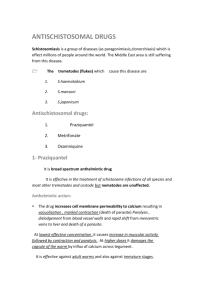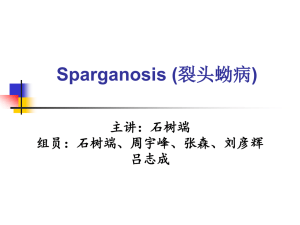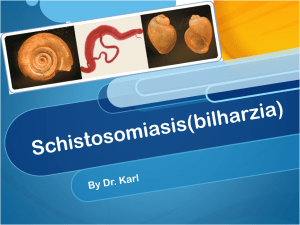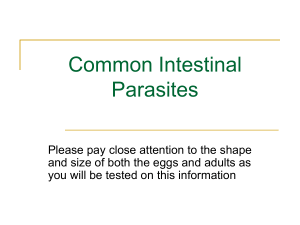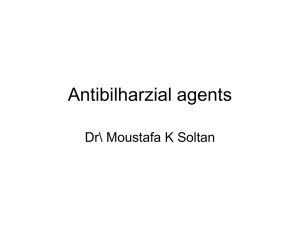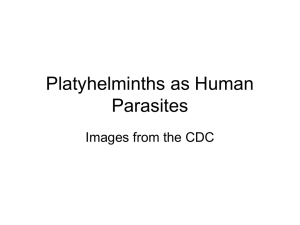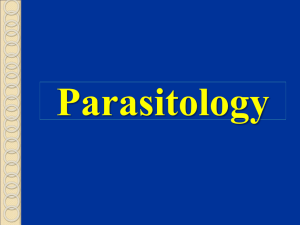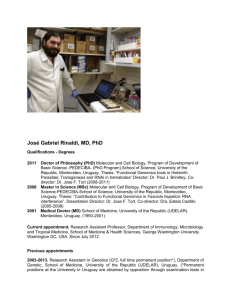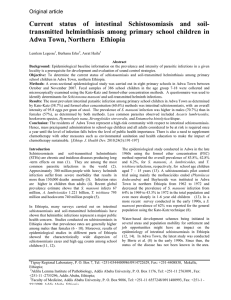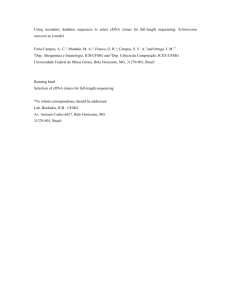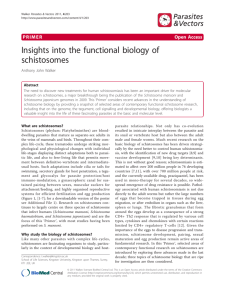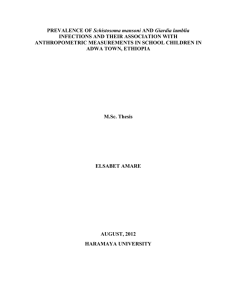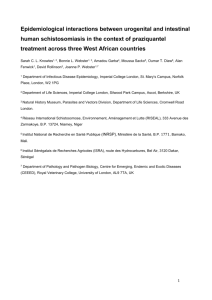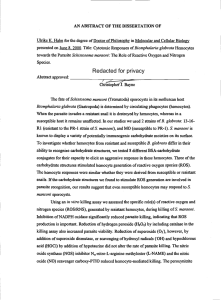Zoonotic helminth parasites recovered from dogs in Kisumu and
advertisement
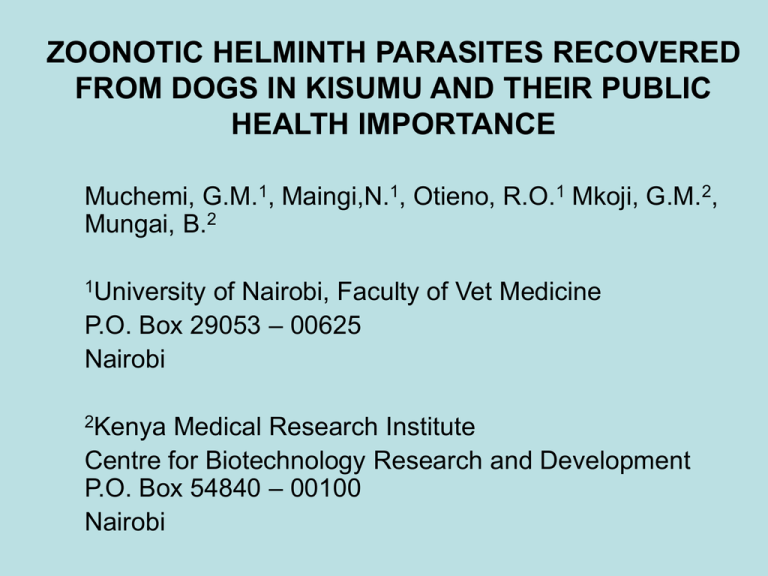
ZOONOTIC HELMINTH PARASITES RECOVERED FROM DOGS IN KISUMU AND THEIR PUBLIC HEALTH IMPORTANCE Muchemi, G.M.1, Maingi,N.1, Otieno, R.O.1 Mkoji, G.M.2, Mungai, B.2 1University of Nairobi, Faculty of Vet Medicine P.O. Box 29053 – 00625 Nairobi 2Kenya Medical Research Institute Centre for Biotechnology Research and Development P.O. Box 54840 – 00100 Nairobi INTRODUCTION • The problem of helminth infections continues to persist in Kenya and other developing countries mainly affecting – – – – Humans Livestock Domestic carnivores Wildlife This is partly due to: – Deterioration of sanitation standards among human communities – Poor environmental management strategies by governments – Poor disease control strategies by public health authorities MATERIALS AND METHODS • Study Location – Kisumu city and its environs around the shores of Lake Victoria chosen for this investigation partly because of other on going helminth related studies. – Kisumu climate and environment is humid and warm providing ideal conditions for helminth parasite development. Drainage channels and swamps are also present thus providing ideal conditions for transmission. • Methods – Overnight faecal samples were collected from dogs that were identified by home owners. – Samples were kept in plastic bags and transported to the Kenya Medical Research Institute (KEMRI) laboratory in Kisumu. – Faecal samples processed using: • Kato-Katz method for Schistosoma diagnosis • McMaster method for nematodes • Formal-ether sedimentation for helminths and protozoa oocysts RESULTS A total of 110 dogs examined. • Prevalence of infection Hookworm (56/110) =50.9% Toxocara (13/110) =11.8% Trichuris (3/110) =2.7% Coccidia (2/110) =1.8% S.mansoni(3/110) =2.7% Descriptive Statistics • • • • • Hookworm Toxocara Trichuris Coccidia S.mansoni Range 20 - 2600 100 - 2500 1 - 100 Mean 581 461 67 Kato preparation of S. mansoni egg in faeces DISCUSSION • The finding of Schistosoma mansoni eggs in 3 dogs raises some important public health issues DISTRIBUTION OF SCHISTOSOMIASIS IN KENYA • Schistosomiasis mansoni is an endemic waterborne disease in humans from the region DISCUSSION • Are these spurious infections picked by dogs during coprophagia of human stools? • Are the dogs naturally infected by S. mansoni in Kisumu. • Previous reports of dogs infected with S. rodhaini, a related Schistosome have been made from Kisumu • S. mansoni is known to hybridize with S. rodhaini – might our finding actually be a hybridized form of the two Schistosomes? • The reported levels of nematode ova intensity are capable of causing high morbidity and sometimes mortality in young animals. WAY FORWARD Need to carry out further investigations to: • Determine how dogs get access to human stools if the infections are spurious • Determine if dogs are naturally infected with S. masoni • How viable the S. mansoni eggs are and whether they are infective to intermediate host snails • The potential of the dog to serve as a reservoir host for human S. mansoni • Use DNA methods to determine if the parasite may be a hybrid of S. mansoni and S. rodhiaini • The potential of the dog to share other reported helminths and protozoa with humans.
